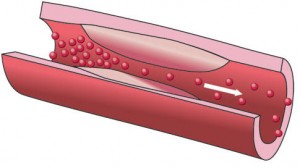An artery-fixing tool does its job, then fades away
 [Popular Science. Read Original]
[Popular Science. Read Original]
Every year, 800,000 Americans elect to have a tiny metal-mesh tube inserted into their coronary artery to prop it open and improve blood flow to cardiac muscle tissue. It’s an easy choice — the alternative entails cracking open the chest and operating on a stopped heart. The tube, or stent, is permanent, but the vessel hardens over it within months. After that, it becomes a nuisance. The metal blocks x-rays and MRI scans, and it can catch blood cells and form a dangerous clot. Now medical-equipment manufacturer Abbot Laboratories has developed a stent that opens the artery and then simply disintegrates.
The innovation was to make the stent from polylactic acid, a molecule derived from corn or sugarcane and used in biodegradable drinking cups. Within six months, the stent begins harmlessly dissolving into the vessel, leaving it clear in two years. John Ormiston, director of the Mercy Angiography Unit in Auckland, New Zealand, recently concluded a two-year, 30-patient trial of the stent for the company. He will soon launch a five-year trial in Australia, Europe and New Zealand involving 80 patients with bigger, more difficult blockages. Abbot hopes to offer the stent in Europe in 2012 and the U.S. soon after, at which point Ormiston predicts patients will make another easy decision. “Why have a permanent structure when a temporary one will do?”
